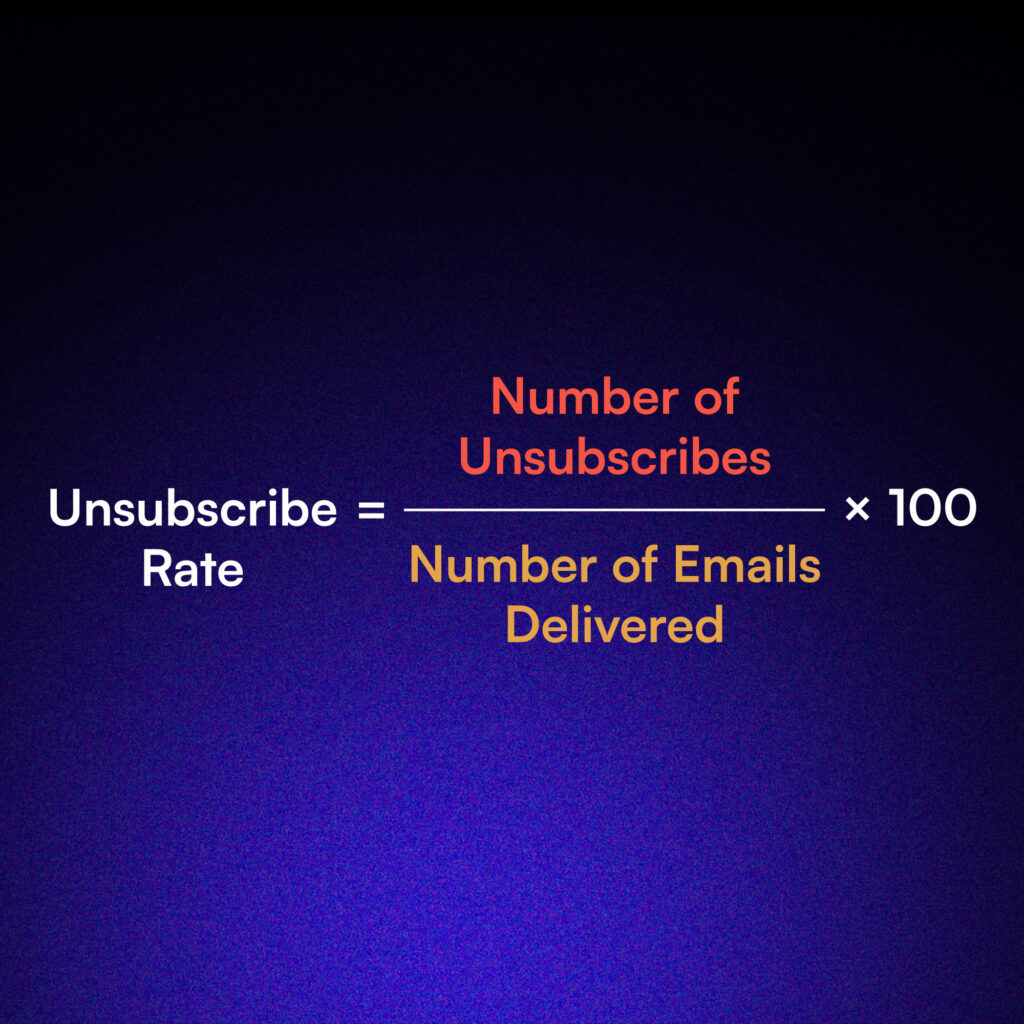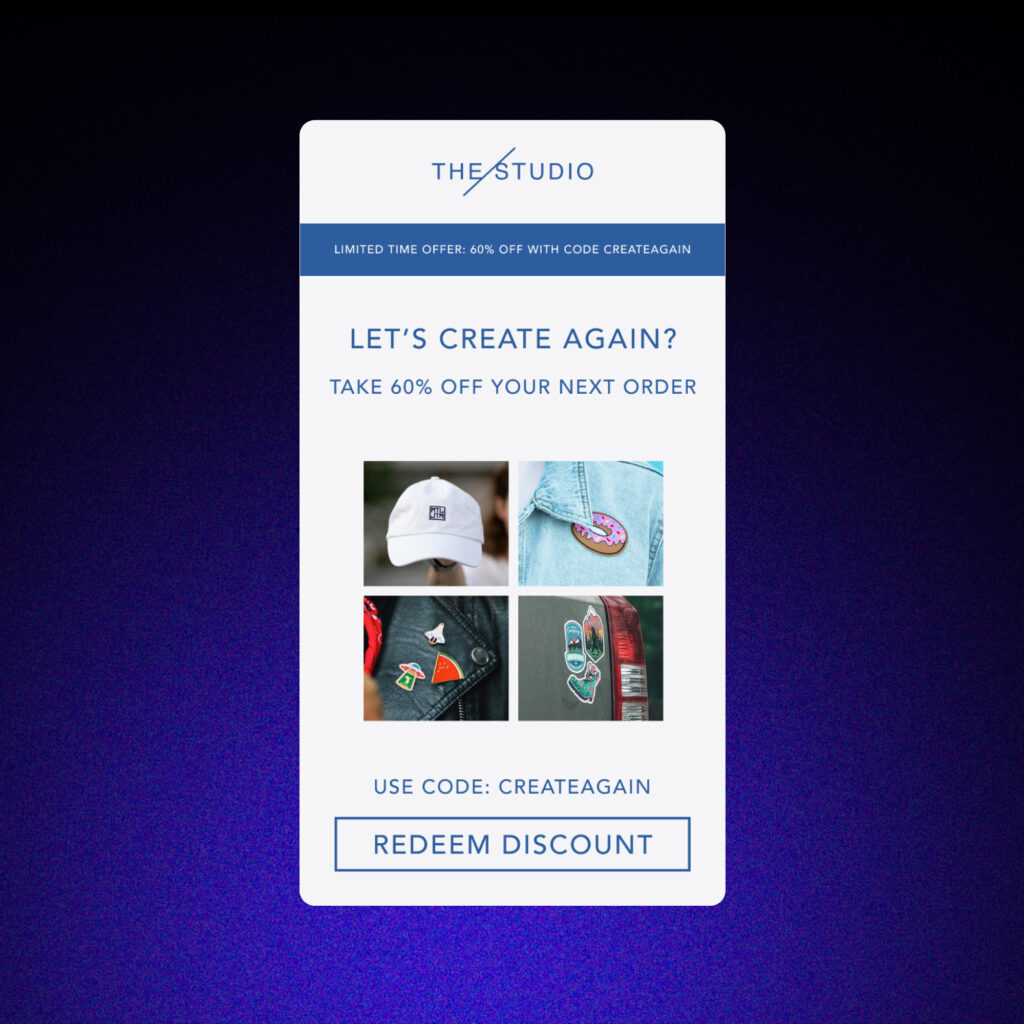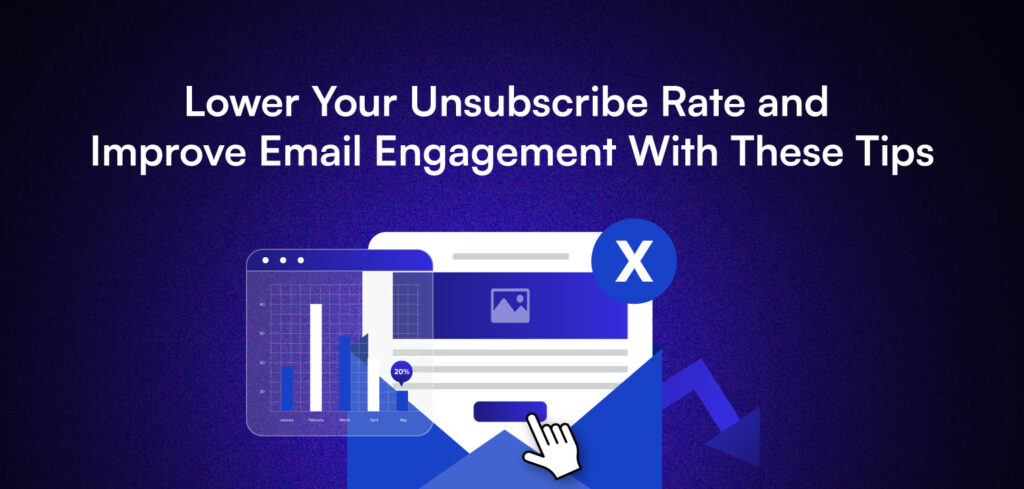“Unsubscribe.”
That tiny link at the bottom of your carefully crafted email holds the power to shrink your list and shake your confidence.
But here’s a thought that might surprise you: unsubscribes aren’t always the villain they’re made out to be. In fact, a healthy unsubscribe rate can be the key to a more engaged, responsive email list.
It’s not about keeping every subscriber at all costs—it’s about cultivating a community that genuinely wants to hear from you.

So, let’s flip the script on unsubscribes. In this deep dive, we’ll explore how to not just lower your unsubscribe rate, but to transform it into a metric that drives growth and engagement.
Let’s get started.
What is Email Unsubscribe Rate?
Simply put, the email unsubscribe rate is the percentage of subscribers who opt out of your email list after receiving an email from you. It’s a critical metric that directly reflects how your audience perceives the value and relevance of your email content.
Tracking your unsubscribe rate is vital for several reasons:
- It helps you gauge the overall health of your email marketing strategy.
- It provides insights into your audience preferences and content quality.
- It can signal when it’s time to adjust your email frequency or content strategy.
Providing an easy unsubscribe option isn’t just good practice—it’s the law. In the United States, the CAN-SPAM Act requires all commercial emails to include a clear and conspicuous explanation of how the recipient can opt out of getting emails from you in the future. Similar laws exist in other countries, such as the GDPR in the European Union.
What's a Good Unsubscribe Rate?
While it varies by industry, a generally accepted benchmark for a “good” unsubscribe rate is below 0.2%. However, the goal isn’t just to maintain a low unsubscribe rate—it’s to keep your engaged subscribers while allowing uninterested ones to leave, which, in turn, improves your overall email performance.
Like most Email Service Provides, Klaviyo offers robust tools for tracking and monitoring unsubscribe rates. You can find this data in your account dashboard, campaign analytics, and flow analytics. There’s also an “Unsubscribe Rate” metric card that you can add to your dashboard for easy monitoring.
Calculating Your Unsubscribe Rate
The formula for calculating unsubscribe rate is straightforward:

Unsubscribe Rate = (Number of Unsubscribes ÷ Number of Emails Delivered) × 100
For instance, if you sent 10,000 emails and 50 people unsubscribed, your unsubscribe rate would be:
(50 ÷ 10,000) × 100 = 0.5%
When interpreting this data, look for trends over time rather than focusing on individual campaigns. A spike in unsubscribes after a particular email can provide valuable insights into what your audience doesn’t appreciate.
Why Do People Unsubscribe?
Understanding why subscribers opt out is crucial for improving your email strategy. Common reasons include:
- Too many emails
- Irrelevant content
- Lack of personalization
- Changed interests or circumstances
- Poor email design or functionality
How to Lower Your Unsubscribe Rate
High unsubscribe rates can significantly impact your marketing efforts. They can damage your sender reputation and even lead to being blacklisted by email providers. Here are strategies to keep your unsubscribe rate low and engagement high:
Go Granular with Email Segmentation
Email segmentation is the paramount to effective email marketing. It’s about dividing your subscriber list into smaller, more focused groups based on specific criteria. This could include:
- Behavioral data: Past purchases, email engagement, website activity
- Demographic information: Age, location, gender
- Customer lifecycle stage: New subscribers, loyal customers, at-risk of churning
You can use advanced segmentation tools that allow you to create highly granular segments. For instance, you could target “customers who purchased sneakers in the last 30 days, opened at least 3 emails, and are located in urban areas.” This level of precision ensures your messages resonate with each specific audience, dramatically reducing the likelihood of unsubscribes.
Content is King
High-quality, relevant content is your best defense against unsubscribes. This means:
- Crafting compelling subject lines that accurately reflect email content
- Creating valuable body content that educates, entertains, or solves problems
- Designing visually appealing layouts that are mobile-responsive
Leverage split testing to refine your approach. Test variables like subject lines, content types (e.g., product showcases vs. educational content), and email designs. Analyze the results to understand what resonates best with your audience, and continuously iterate to improve engagement and reduce unsubscribes.
Personalize Beyond the First Name
True personalization goes far beyond inserting a subscriber’s name in the email. It’s about tailoring the entire email experience to the individual. This can include:
- Dynamic content blocks that change based on subscriber data
- Product recommendations based on browsing or purchase history
- Personalized offers or discounts tied to customer loyalty status
Optimize Your Send-Out Frequency
Sending too many emails can lead to fatigue and unsubscribes, while too few can result in disengagement. The key is finding the right balance for your audience. Here’s how:
- Analyze your engagement data to understand optimal sending frequency
- Consider a tiered approach, where highly engaged subscribers receive more frequent communications
Remember, optimal frequency can vary by segment. VIP customers might welcome daily emails, while occasional buyers might prefer weekly or bi-weekly communications.
Strategic Send Time Optimization
The timing of your emails can significantly impact open rates and, consequently, unsubscribe rates. For example, Klaviyo’s Smart Send Time feature uses machine learning to determine the optimal send time for each individual subscriber based on their past engagement behavior.
However, don’t rely solely on automation. Conduct your own A/B tests on send times and days of the week. Analyze the results to identify patterns specific to your audience and industry.

Offer Unsubscribe Options
While it may seem paradoxical, making it easy to unsubscribe can actually improve your overall list health. Here’s why:
- It builds trust with your audience
- It ensures your list consists of truly interested subscribers
- It can improve your sender reputation and deliverability
If you can also customize your unsubscribe page, do so. Use this opportunity to offer alternatives like reducing email frequency or updating preferences. This can help retain subscribers who might otherwise have unsubscribed completely.
Legal Compliance
Adhering to email marketing laws isn’t just about avoiding fines—it’s about respecting your subscribers and maintaining a positive sender reputation. Key laws to be aware of include:
- CAN-SPAM Act (US)
- GDPR (EU)
- CASL (Canada)
Most email service providers have built-in features to help you stay compliant, such as automatic inclusion of unsubscribe links and easy management of consent. Familiarize yourself with these features and ensure your email practices align with relevant regulations.
Sometimes Less is More
Remember, a smaller, more engaged list is often more valuable than a larger, unengaged one. Consider implementing a re-engagement campaign for inactive subscribers. This could involve:
- A series of targeted emails to re-spark interest
- Special offers or exclusive content to encourage engagement
- A final “breakup” email asking if they want to remain subscribed

This approach can either re-engage dormant subscribers or prompt uninterested ones to unsubscribe, ultimately improving your list quality and reducing your unsubscribe rate in the long term.
Continuous Monitoring and Optimization
Email marketing is not “set it and forget it”. Regular monitoring of key metrics, including unsubscribe rates, is crucial.
Pay attention to:
- Unsubscribe rates for specific campaigns or flows
- Trends in unsubscribe rates over time
- Correlation between unsubscribes and other factors (e.g., send time, content type)
In conclusion
Lowering your unsubscribe rate isn’t about holding onto every subscriber at all costs. It’s about creating a high-quality list of engaged subscribers who value your content. By implementing these strategies and making use of your analytics, you can reduce unsubscribes, boost engagement, and ultimately drive more value from your email marketing efforts.


